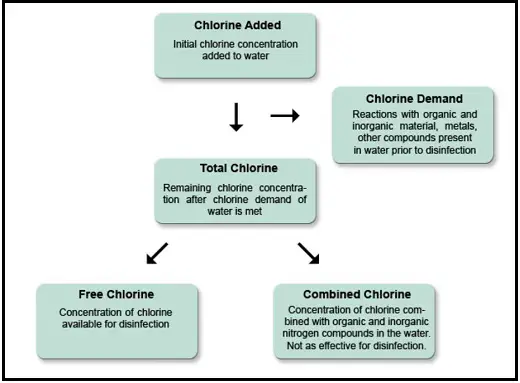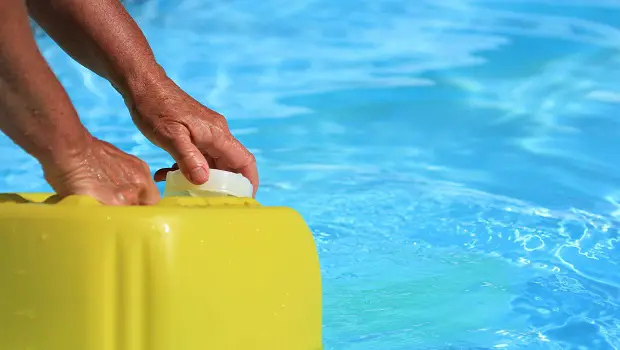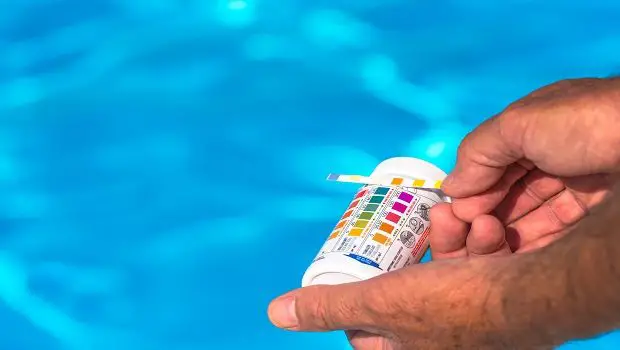SLAM – Shock Level And Maintain Your Pool: Eliminate Algae & Cloudy Water
DISCLOSURE: As an Amazon Associate, I earn from qualifying purchases.
As a pool owner, you might have experienced this.
You step out, ready to swim, and your pool is green and muddy. What happened? Did you go without testing? Maybe you had a celebration the day before with dozens of swimmers.
The essence is that you have algae growth due to a lack of chlorine in the pool. And what happens to most people is they wind up in the pool shop and get told that they have to purchase Chlorine shock, Algaecide, and something to eliminate Phosphates.
It appears to work, but gradually, and then, and you bring it home after spending too much money, pour it all in, and it looks to work, but slowly, and then after a few days or a month, you are back at the same dilemma.
SLAM stands for Shock, Level, And Maintain. If you have algae in your pool will need to deal with it, the method is to SLAM your Pool.
Pool Logger contains a built-in SLAM mode to help you. Essentially what you want to do is, rather than buying hundreds of dollars of useless chemicals that add more unnecessary stuff into your pool.
Go and get regular old bleach. Not the splashes and scented sort of laundry, but regular bleach. It usually comes in 121-ounce jugs at 8.25% strength at the local grocery store or hardware store for about $2.50 a gallon.
Unless there are problems like high levels of Cyanuric Acid, this is all you want to clear your swimming pool.
SLAMing your pool is the ideal way to sanitize your pool, eliminate algae, and make your water crystal clear.
For those who have algae, or the CC level is above 0.5, or the free chlorine (FC) amount is zero, you should SLAM the pool. You can’t do this immediately…it often takes a few days to see it finished…no shortcuts.
If you’re maintaining suitable FC levels, there isn’t any need to SLAM (or shock) per week, or on another regular program.
Prerequisites:

- You want to get a FAS-DPD chlorine analysis.
- Also understand your present CYA level and then check the similar FC shock level. You can use The CYA/Chlorine Chart in Pool School to find the right FC shock level for your CYA level.
- It’s ideal to use liquid chlorine or bleach when SLAMing. You might want to have enough to boost the FC level to jolt level a few times. It’s especially important to avoid using dichlor when SLAMing, since CYA will be raised by it far too fast.
- Check the pool is free of leaves and other debris (as much as you can ).
- Make sure your filter is working correctly, and you know how to wash it out if it becomes necessary.
- Assess and adjust the PH to between 7.2 and 7.5. The PH test is not reliable during SLAMing, before you begin, be sure to look after this.
- Run the pump 24/7 till you’re done SLAMing.
SLAM:
- Test the FC level and put sufficient chlorine to bring FC up to shock level
- Asses and fixes chlorine levels as often as practical, but not more than once per hour, not less than twice each day. Chlorine additions should often be, especially at the beginning. Algae and other natural particles will eat up chlorine very quickly at first. As things change, you will spend less chlorine each cycle and can add chlorine less often.
- Brush and vacuum the whole pool once a day
- Backwash or clean the filter as needed
- Vacuum debris up as needed
You’re Performed when:
- CC is 0.5 or lower;
- You pass an OCLT (i.e., overnight FC loss evaluation indicates a reduction of 1.0 ppm or less);
- And the water is clear.
When all three are true, you’re done SLAMing and allow the FC to drift down to normal levels.
Details:

It’s tough to do this process correctly unless you’re ready to do your testing using a FAS-DPD chlorine test. Without that particular test, you risk wasting your time and potentially having to start all over later.
SLAMing a pool is the most successful when CYA is about 30 to 40. Below 30, you lose chlorine. As CYA goes up, SLAMing needs more chlorine, which begins to get impractical around 80 or 90. With CYA over 90, we recommend replacing water before starting the SLAM process to get CYA down.
Based on the filter you have, it may take the filter a week or more to clear the water up, even after the algae are all dead. DE filters are generally much faster than that but need regular care when removing algae. Sand filters are the most deliberate, and cartridge filters are somewhere in-between.
While SLAMing, the look of the water should improve each day, though maybe only by a little. If you didn’t find any improvement, you may have an issue with your filter or have a higher CYA level than you believe, think flow, or have any other issue.
The objective of SLAMing would be to add chlorine to oxidize all the combined chlorine, algae, bacteria, viruses, ammonia, and other contaminates. Oxidization splits down the organic particles into smaller parts, which are safe. While SLAMing, you want to keep pouring chlorine until the breakdown procedure is finished.
Greater FC levels will oxidize pollutants more quickly, but too high levels can damage the pool or pool equipment. Shock levels are intended to break down contaminates reasonably while posing minimal risk. It’s not likely to know in advance how much chlorine will be needed to SLAM the Pool. Alternatively, chlorine is added to keep the shock level until testing indicates that the procedure is complete.
If you have a chlorine tablet dispenser, saltwater chlorine generator, Liquidator, or injection pump, you will still have to use another chlorine means for SLAMing. All of these devices are intended to add chlorine gradually and regularly over many hours. To lower CC or kill algae, you need to put in lots of chlorine all at once.
The best solution for this is only to shut off the SWG, injection pump, Liquidator, etc. and use liquid chlorine just for the length of the SLAM.
If you have a sand filter, it is possible to speed the process of clearing up the water by including a little DE to your filter.






